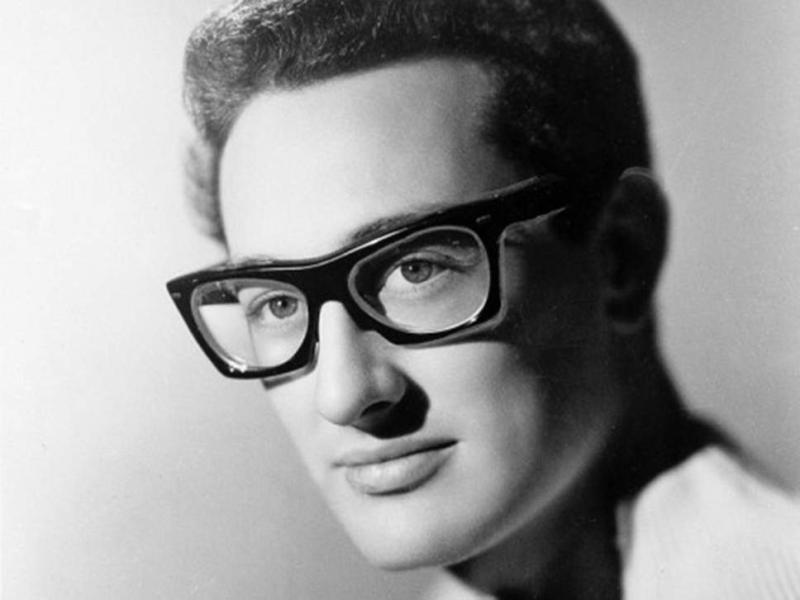The Day the Music Died: 60 years since that fateful plane crash, Buddy Holly’s rock’n’roll legacy lives on



Sixty years ago today, on 3 February 1959, Buddy Holly ’s bass player Waylon Jennings uttered seven words that would haunt him for the rest of his life. His band, led by rock’n’roll wunderkind Holly, had just played a rollicking show in Iowa as part of their Winter Dance Party tour. “Even though it was a Monday night,” Jennings later recalled, “it seemed like half the town’s teenagers had turned out.”
But Holly was fed up. Tired of the freezing cold, constantly malfunctioning tour bus, and desperate to avoid the 400-mile road trip to their next stop, he booked a private plane to Minnesota instead. Jennings was supposed to join him, but at the last minute gave his seat to “The Big Bopper”, who was on the same tour and suffering from a bad case of the flu. When Holly found out, he was teasingly aggrieved. “I hope your damned bus freezes up again,” he joked to his friend. “Well,” shot back Jennings, “I hope your ol’ plane crashes.”
That “ol’ plane” did crash, just a few minutes after it took off. On board were three renowned musicians – 22-year-old Buddy Holly, 17-year-old Ritchie Valens (who won his seat on a coin toss with Tommy Allsup), and 28-year-old J P “The Big Bopper” Richardson Jr – as well as the pilot, 21-year-old Roger Peterson. Holly and Valens were thrown from the plane’s torn fuselage. Richardson was flung into a neighbouring cornfield. Peterson became entangled in the wreckage. None of them survived.
Twelve years later, on his single “American Pie”, Don McLean dubbed the tragedy “ the day the music died ”. It was an apt description; all three singers on board had talent in abundance. The Big Bopper’s smash hit, the playful, rockabilly number “Chantilly Lace”, had made him a star, and Ritchie Valens was helping pioneer the Mexican American Chicano rock movement. But it was Holly who was changing the landscape of rock’n’roll music.
With his goofy, bespectacled look and frequent falsetto tenor, Holly was a far cry from the rock stars who came before him. At the time, it was virtually unheard of for a singer to write his own songs, arrange them, and orchestrate the instrumentals too – but Holly was a different breed of artist.
Having made a name for himself opening for Elvis Presley, he signed to Decca Records at the age of 19, in 1956. After a handful of disappointing singles, though, he was dropped and instructed not to record with anyone else for five years. Undeterred, he teamed up with producer Norman Petty, formed a new group called The Crickets to get around that five-year clause, and released the honky-tonk anthem “That’ll Be the Day”. This time around, something about his hiccupping vocals, watertight melodies and simple but decisive rhythm and blues guitars struck a chord with young music fans.
“Buddy was distinctive and unmistakeable, both visually and aurally,” said The Searchers’ Frank Allen in Spencer Leigh’s biography Buddy Holly: Learning the Game. “While we were skiffling away, trying to find a fourth chord, Buddy was giving us the opening bars of “That’ll Be The Day” with unbelievable expertise and on an instrument that was the equivalent of a bullet-finned ’59 Cadillac. He looked gangly and geeky with those glasses but that guitar made him unbelievably cool. It was the revenge of the nerd. His records are almost without exception terrific.”
“That’ll Be the Day” topped the charts in the US and the UK, and subsequent singles “Peggy Sue” and “Everyday” proved equally popular. By the time Holly set out on his Winter Dance Party tour, leaving behind his young, pregnant wife María Elena Santiago (the immortalised “widowed bride” of McLean’s song), he was a household name.
But his career, and indeed his life, was cut short on a flight that should never have taken off.
Read more ...
Tags
Who is online
51 visitors

January 31st, 1959. Duluth MN Armory, Duluth MN.
We (four of us) drove down in a 1941 Chev Special Deluxe from Red Lake MN to Duluth to see the concert. I'll never forget it.
Two days later Buddy, Richie, The Big Bopper were all dead....Truly the day the music died.
Let's not forget J P “The Big Bopper” Richardson Jr ... "Chantilly Lace"
Here's another good video about the 3 musicians ...
Our love for Buddy Holly's music will "Not Fade Away".
That's a good cover of the original!